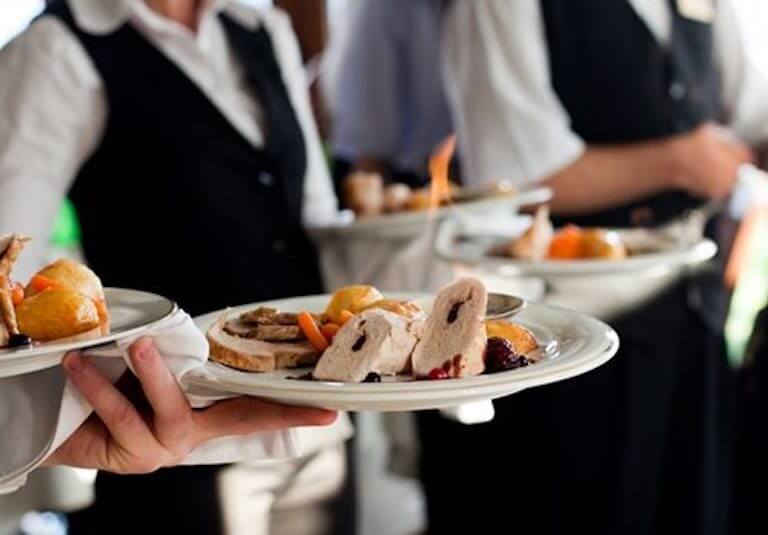A quality culinary school program can provide you with many of the skills necessary to succeed as a culinary professional. While these techniques can be vital to your execution in the kitchen, there are some other lessons that you may have to learn on the job. One of those is how to communicate well with the wait staff.
Although the front of house and back of house staff are sometimes thought of as different teams, they’re both working toward the same goal. That said, their expertise and training are in different areas, so they don’t always “speak the same language.” As a chef, one of your jobs is to make sure everyone in the restaurant is on the same page.
But doing so is often easier said than done! To help you get started, check out these five steps chefs can take to build better communication.
1. Anticipate Guest Questions
Often, the communication breakdown between wait staff and chefs is simply due to lack of knowledge or experience. Servers who aren’t well-trained on the ingredients in each dish may have to repeatedly come back to the kitchen to ask questions.
Is the risotto gluten-free? Can we make the chopped salad vegetarian? What type of fish is used in the fish and chips?
Multiply those interruptions by eight or ten servers on a shift, and it’s no wonder chefs might get frustrated!
To head this off, educate the staff about recipe ingredients. At a minimum, servers should have a cheat sheet describing which major food allergens are in which dishes. The more servers know about the food, the better ambassadors they will be to their guests.
This preemptive communication has three benefits:
- Guests don’t have to wait on answers to their questions.
- Servers look more professional.
- Busy chefs have fewer interruptions for questions and can focus on kitchen operations.
2. Assign One Point of Contact
Although servers should be encouraged to ask questions and get to know the kitchen staff during off-hours and downtime, any extra chit-chat on the line needs to be kept to a minimum when there’s work to do. Still, the waitstaff needs to be able to ask important questions. To help the kitchen staff stay focused and allow the front of house to get the answers they need, assign one person to communicate between the front and back of house.
This expeditor will be responsible for heeding requests from servers, such as asking about extra sides of gravy or checking in on an overdue dish. By removing the need for every member of the waitstaff to talk to the kitchen, you can limit the amount of unnecessary noise coming into an already hectic kitchen.

A well-trained expeditor will also know which add-on requests are free and which need to be rung in to cover the cost. If chefs are consistently handing out free sides of aioli rather than asking servers to ring it in, they risk hurting the kitchen’s cost of goods and thus profitability.
3. Remove the Language Barrier
Servers and chefs often have distinct languages and terms that they use to communicate with their coworkers. Chefs may refer to an under-the-counter refrigerator as a lowboy. Or they may call a small metal hotel pan a “nine pan.” Other terms may be short phrases that describe a particular dish or a specific preparation request.
When you spend all day in the kitchen, you can quickly learn how to communicate with the other chefs. But servers, especially newer ones, may not understand these terms. It can be helpful for new servers to have a kitchen training shift to learn this terminology before they start service.
If that isn’t an option due to time or labor costs, add a “kitchen terminology” sheet to the server’s training materials, with the most important words and phrases (things like “eighty-sixed”) listed first. Bring the front of house staff on the same page as the kitchen to prevent miscommunication and frustration.
A shared language among coworkers can help build a sense of camaraderie and collaboration.

Take the Culinary Career Survey
We’ve compiled a checklist of all of the essential questions into one handy tool: career options, culinary interest surveys, educational opportunities, and more.
4. Keep the Guest in Mind
The chef’s world is in the kitchen. While the Executive Chef may speak to guests occasionally, most of the kitchen staff stays safely ensconced behind that swinging door.
This disconnect can make it easy to forget that servers are intermediaries. If you find yourself feeling frustrated by wait staff requests, remind yourself that they’re trying to provide the best guest experience they can—which is a shared goal.
To the kitchen staff, a request for a skirt steak sandwich on a gluten-free bun with chimichurri on the side and roasted cauliflower instead of french fries may scream madness. But to the wait staff, it’s an order that’s meant to meet a customer’s request. It’s important for those in the kitchen to remember that servers are relaying a message from a guest or trying to solve a problem on the other side of the door. Work with them to solve the issue. Losing your temper will just stress out the server who may then bring that tension back out onto the floor with them.
5. Get to Know Each Other
In some restaurants, there’s a sharp divide between a restaurant’s front of house and back of house staff. The expo line can turn into a barrier that neither side crosses. This separation makes communication between the two teams even more difficult.
There are stories of chefs and servers working together for weeks or even months without ever learning each other’s names! Such dynamics can lead to a poorer customer experience, lower morale in the workplace, and unnecessary stress.
Fortunately, this situation is improving. Kitchens are becoming more welcoming places for chefs and servers alike. But it still takes a bit of effort to get to know each other.
A great chef not only prepares great food, but they should also ensure that dishes get delivered fast, efficiently, and with a smile. Investing time and effort in building great relationships with the wait staff will help to create connections between the two groups, encouraging everyone to pull together in the same direction for a more successful restaurant.

When you’re new, introduce yourself to the servers, hosts, and bartenders. And once you’re a veteran, continue to introduce yourself to new staff with a smile. Sit with servers during all-staff meetings and share a meal with the new guy. Encourage the rest of the chefs to do the same!
Better Communication Could Mean a Better Chef
Effective communication with wait staff is an important but often neglected part of a chef’s life. A more open dialogue between the kitchen and front of house can lead to a calmer kitchen environment, a better guest experience, and a more enjoyable workplace. And that’s a win for the entire restaurant.
If you’re hoping to become a great chef, a formal education could be a great place to start. Escoffier offers programs in the culinary arts, baking & pastry, and plant-based culinary arts. In these programs, students can explore kitchen tools and techniques, as well as important topics like entrepreneurship and effective communication. And with additional programs in hospitality & restaurant operations management and holistic nutrition & wellness, Escoffier offers a suite of well-rounded programs suited for students seeking other food-related careers.
“Many of our students have previous culinary experience but are not familiar with front of the house operations. Our program addresses how to provide your customers with an outstanding hospitality experience, how to manage employees in various roles throughout the operation, and how to manage the profitability of the establishment.”*
Maria Davenport, Hospitality & Restaurant Operations Management Instructor
If you’re already comfortable in the kitchen but would like to understand more about human resources, leadership, and more, our hospitality & restaurant operations management program could be for you.
Did you find this article helpful? Here are a few more you might like:
- How to Become a Chef: The Complete Guide
- Am I Too Old to Become a Chef?
- How Chefs Can Manage Stress in a Professional Kitchen
*Information may not reflect every student’s experience. Results and outcomes may be based on several factors, such as geographical region or previous experience.
This article was originally published on December 16, 2015, and has since been updated.

 “Many of our students have previous culinary experience but are not familiar with front of the house operations. Our program addresses how to provide your customers with an outstanding hospitality experience, how to manage employees in various roles throughout the operation, and how to manage the profitability of the establishment.”*
“Many of our students have previous culinary experience but are not familiar with front of the house operations. Our program addresses how to provide your customers with an outstanding hospitality experience, how to manage employees in various roles throughout the operation, and how to manage the profitability of the establishment.”*

